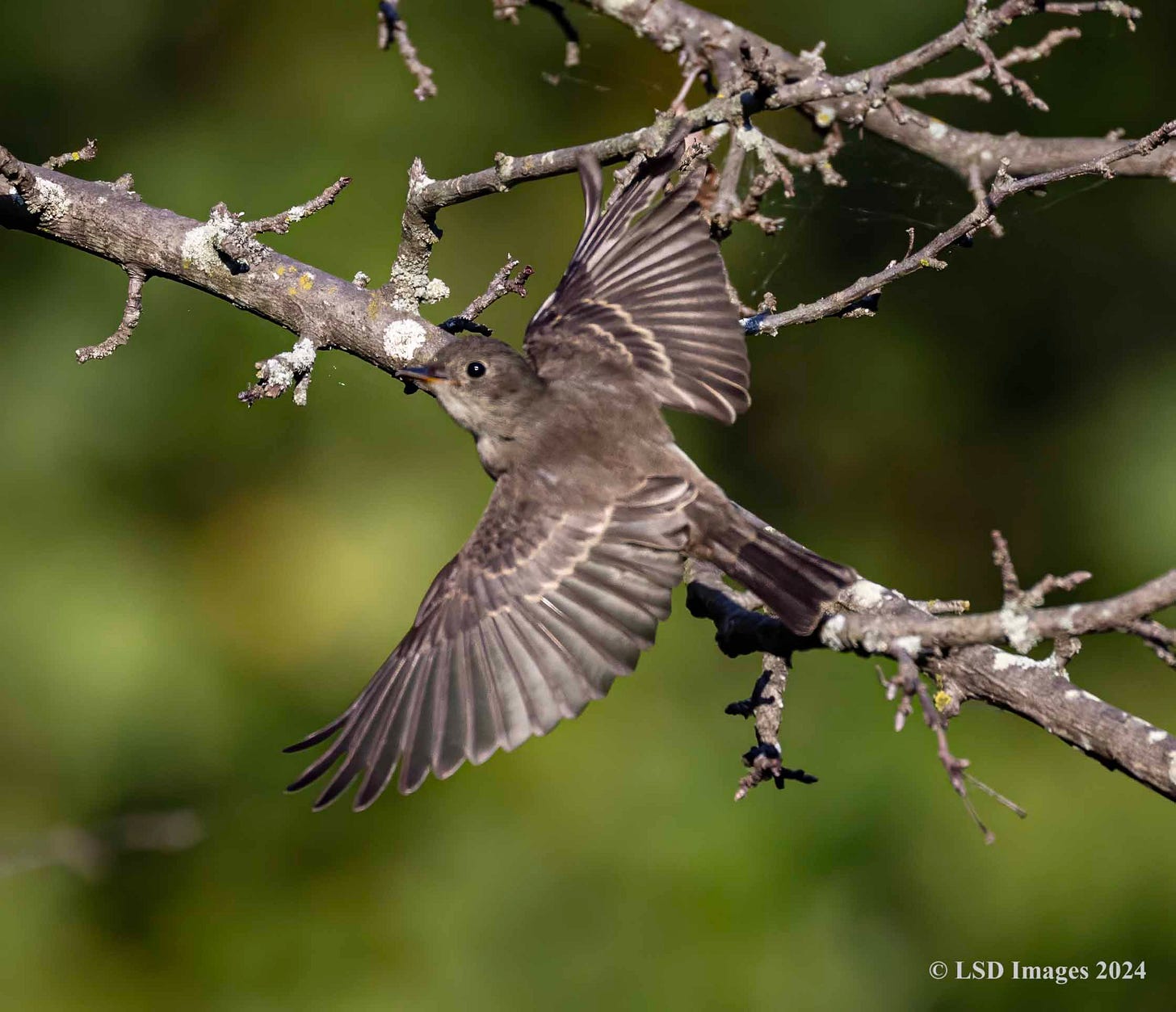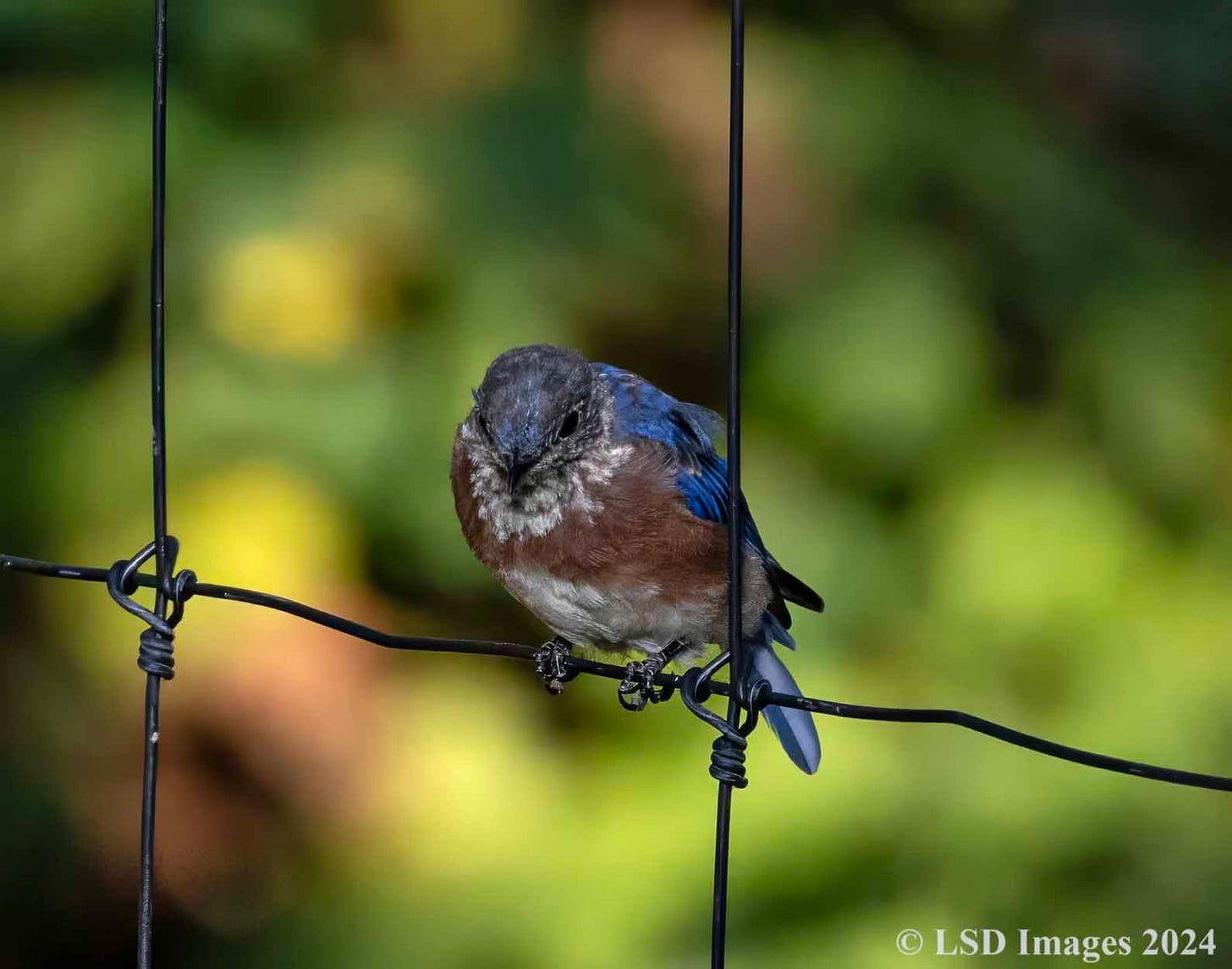Feathered Friends
Puddock Hill Journal #77: The presence of resident and migratory birds reveals the fruits of our labors.
One early morning about a month ago, my wife stuck her phone out the window, and her Merlin app recorded songs from the following birds:
Blue Jay
Northern Cardinal
White-breasted Nuthatch
House Finch
Eastern Bluebird
American Robin
Brown Thrasher
Cedar Waxwing
Rose-breasted Grosbeak
Downy Woodpecker
American Goldfinch
Gray Catbird
Red-shouldered Hawk
Least Flycatcher
Belted Kingfisher
Red-bellied woodpecker
Norther Flicker
Carolina Wren
Tufted Titmouse
The night before, for the first time ever, we heard the distinctive, eerie call of an Eastern screech owl.
While some insects such as bees can visit from a few miles away, monarch butterflies are the only arthropods known to make two-way seasonal migrations. Many bird species, on the other hand, do this routinely and play a unique role in the landscape, among other things by hunting insects and fertilizing plants with their poop.
The remarkable BirdCast website indicates that more than a million migrating birds crossed Chester County just this Wednesday night, and sharp-eyed birders in our area may see ruby-crowned kinglet, American redstart, golden-crowned kinglet, eastern wood-peewee, yellow-bellied sapsucker, palm warbler, magnolia warbler, black-and-white warbler, and northern parula passing through.
We find enchantment in birds not only for their song and often colorful appearance, and not only because they can soar above the clouds—as high as 10,000 feet, according to BirdCast. I think the greater profundity of their presence in our yards and preserves comes from the knowledge that they roam so far to get here and thus provide threads of connection in the great worldwide canvas of nature. Redstarts, for example, winter all the way down in South America. Europeans get birds that migrate from Africa.
At Puddock Hill we have much of what both migratory and resident birds might want. Thanks to our two spring-fed ponds and a small stream, they have year-round water. In addition to mature trees and native flowers—more of the latter since we erected our deer fence—we put out bird feeders all year round. We also have placed 15 nesting boxes around the place, mostly for bluebirds and wrens. And every year we add to the once-depleted shrub layer, installing native plants that provide essential food in the form of seeds and berries.
It occurred to me not long ago to invite a skilled photographer to see what he might capture among the wild flock. So I invited my friend Larry Drexler to visit with his giant lens and SLR camera.
Larry retired not long ago as a big-bank executive and decided finally to do something productive with his life by photographing birds. (I’m kidding, Larry. Well, sort of.) By the time I invited him, we’d passed peak birding season, but in an hour before sunset he managed to snap the following pictures of birds and other things.
Eastern wood peewee:
Eastern bluebird:
Northern flicker:
Carpenter bees on goldenrod:
Black-eyed Susan:
White-tailed deer in Stage 3 alarm:
The deer, of course, is non-migratory. Mercifully, it was also outside the fence in the neighboring development’s open space.
I hope Larry will find it in his heart to return frequently, in all seasons, to help document the birds of Puddock Hill.
Note: All photos are used with permission. © by Larry Drexler











Thanks for sharing the wonderful wildlife photos from Larry Drexler.